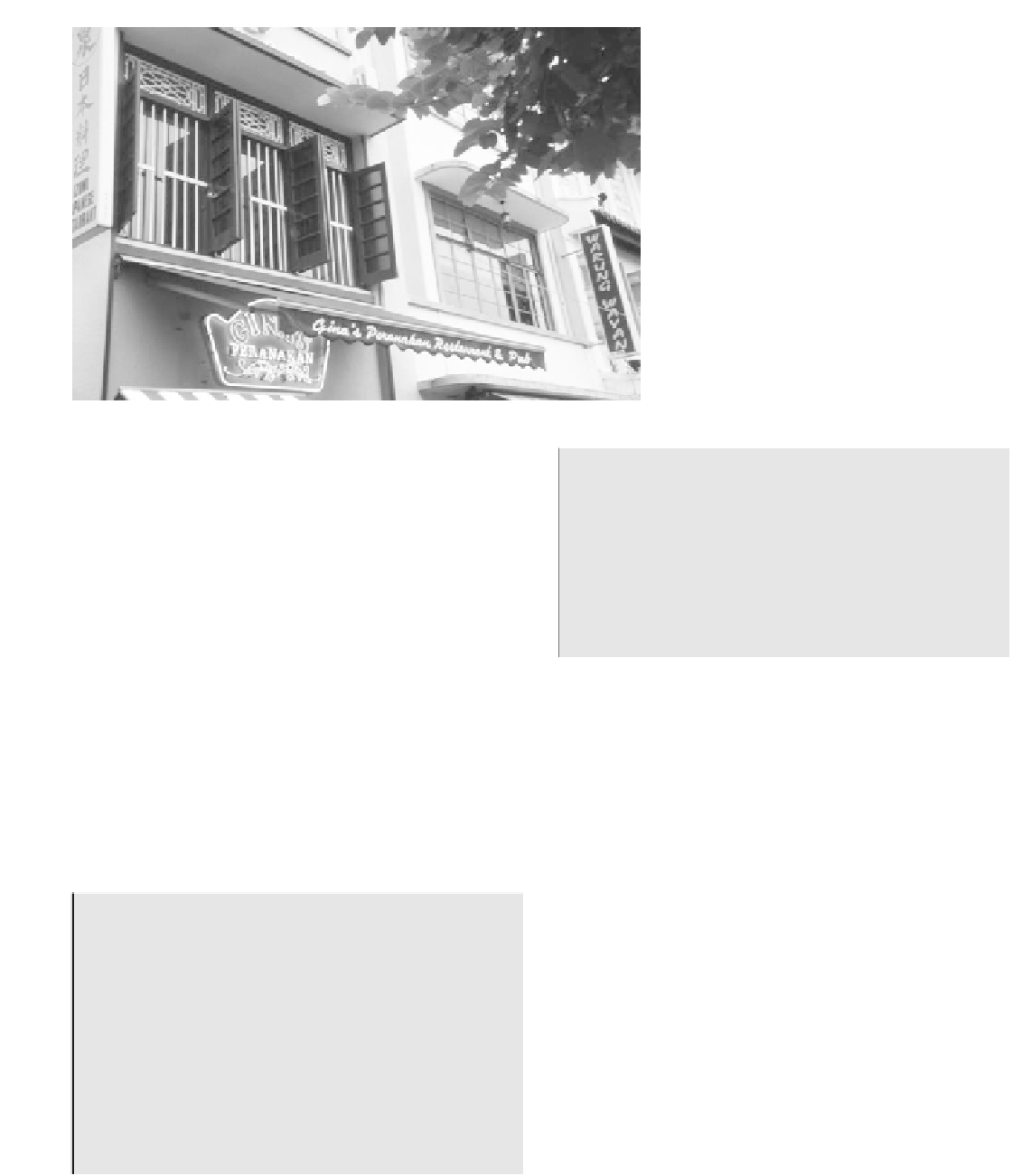Geography Reference
In-Depth Information
Figure 16-17
This former Chinese shop-house along the
Singapore River has been renovated and turned
into a trendy Peranakan restaurant. It is only
one of many restaurants along the waterfron
.
Photograph courtesy of B. A. Weightman.
such as upscale shops and restaurants (Figure 16-17). In
advertising, the city is being portrayed as having, “its head
in the future and its soul in the past.” As geographer T . C.
Chang (1999) points out, “On the conceptual front, the
power relations between the 'global' and the 'local' in Sin-
gapore demonstrate that 'globalization' and 'localization'
are mutually constitutive.” These relations are revealed in
the city' s carefully orchestrated heritage landscapes.
Language, as the context for thought, is vital to forg-
ing identity . In the 1960s, the PAP stressed the impor-
tance of Malay and English. As Singapore' s prosperity
grew and the economy became more internationalized,
the PAP shifted its emphasis to Mandarin and English at
the expense of Malay and other Chinese dialects. T Today, ,
there are four official languages: English, Malay , Man-
darin, and Tamil. English is the language of education
and government. Singapore is the only country in Asia to
have English as an official language.
language for everyday communication and “
So sh-
iok
” (“That' s great”). New words and expressions
are invented almost on a daily basis, fueled by the
Internet experience. One of the latest terms is “Y ou
blur like
sotang lah
.” This translates as, “Y ou're
dumber than squid man.” As the debate over
Singlish and English rages, it is clear that Singlish is
the language spoken on the street.
In the twenty-first century Singapore will be among
the few prosperous countries in the world. Its geographic
situation may lessen in importance as it becomes en-
meshed in the global economy' s computer revolution. In
regional terms, Singapore regards itself as the economic
engine of the region. The growth triangle is evidence of
this view . Nevertheless, Singapore worries about its im-
age and is constantly advocating campaigns extolling
what it means to be Singaporean. Its 1990s drive to reveal
historic aspects is only part of this continuing search for
national identity . However the future is charted, it will be
in the context of “Okay can!”
Singlish
Singlish is a bewildering mixture of English, Man-
darin, Chinese dialects, and Malay . There is concern
that the rise of this dialect will demote the official
languages, which are intended to internationalize
the state. The artistic community has embraced the
dialect enthusiastically , and Singlish is even popu-
larized on television shows. An example is: “Don't
pray pray
lah
,” which means “Don't fool around.”
Many people feel that Singlish is their own personal
Indonesia: Integration
Versus Disintegration
With more than 17,000 islands, Indonesia is the world' is
largest archipelago (Figure 16-18). With a population of
more than 240 million, it is the fourth most populous




















Search WWH ::

Custom Search